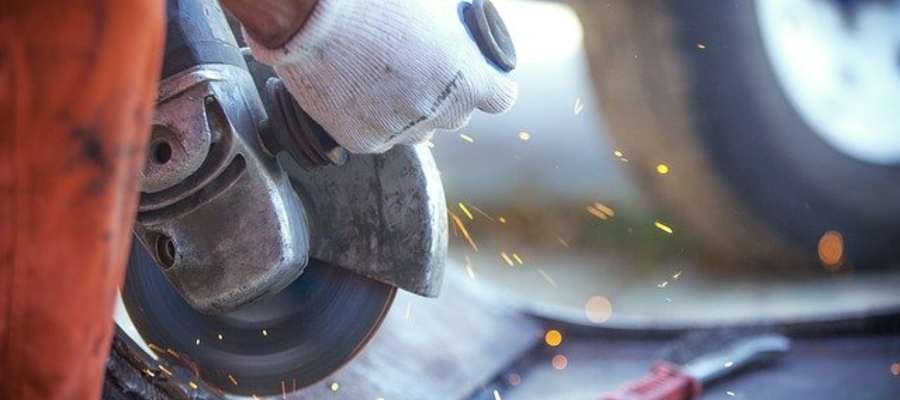Safety in use of Industrial Power Tools, fixed and portable power machines
Portable electric
power machines and industrial power tools are great for getting a job done quickly and
accurately but are dangerous if not used properly. Special safety
precautions should be taken when using it to avoid injury.
Safety in use of Industrial Power
Tools, fixed and portable power machines
Here are the special
safety precautions when using industrial power tools and machines powered by
electric and classified as safety when using stationary or mounted power tools
/ machines and portable power tools.
Safety in use of Fixed or Mounted Power Tools/ machines
Lathe machines, grinding,
drilling and boring machines etc. are covered under this category. Beside the
mechanical hazards associated with the operation of the machines, electrical
power supplied to these also poses the hazards if not maintained properly. Following
safety guidelines are helpful to make such machines safe for use:
1. Keep appropriate
distances on all sides of machine to facilitate safe movement of operator.
2. Provide electric cable
of proper size and rating and lay it underground or through a rack in such a
way that it does not create obstruction to the operator during his routine
activities.
3. Provide safety devices/protections on every machine as per the size, voltage level and power
requirement of the machine.
4. Protect the machine
against monsoon water and dust.
5. Provide adequate
guards to fence the moving parts of the machine. If possible, mechanical guards
should be interlocked with electrical power supply.
6. Mark the maximum
utilization level and its speed on or nearby all machines.
7. Ensure sufficient
illumination level around such machines.
8. Provide adequate
earthing to each machine.
9. Ensure proper
electrical isolation prior any maintenance work on such machines.
10. Wear all necessary
personal protective equipment like safety goggles, face shields, safety shoes
etc while working on such machines/equipment.
11. Do not wear gloves,
ties, mufflers, loose clothing and jewelry while working on such machines.
Clothing should be free from oil, solvents or frayed edges to minimize the fire
hazards due to flying sparks.
Safety in use of Portable Power Tools
1.
Disconnect the electrical connection before changing the accessories on the portable
power tools.
2.
Make sure that the guards are available before using the tool again.
3.
Do not leave a tool overhead where there is a risk of falling if someone pulls
on the cable.
4.
Lay the power cables of the tools so that they do not present a risk of tripping. Do not hang cables over aisles or work areas whenever possible.
5.
Do not hang cables over nails, bolts or sharp edges. Keep them away from oil,
chemicals and hot surfaces.
6.
When working at height with power tools, provide suitable scaffolding or a safe
working platform if necessary.
7.
Protect eyes and ears when working with explosive cartridge equipment.
8.
Use insulating rubber platforms / mats and rubber gloves to provide additional
safety against electric shock when working with portable power tools in wet
locations such as tanks, boilers and wet soils.
9.
Power all portable power tools through an appropriately rated Earth Leakage
Circuit Breaker (ELCB).
10.
Make sure all tools contain a non-conductive handle.
11.
Use tools with double insulation.
12.
All tools must be effectively grounded
Need of safety Inspection of Portable Power Tools
To maintain all portable power tools
reliable and safe to use, it is necessary to establish a safety inspection
system to ensure that portable power tools / equipment is tested and certified
by a qualified person before being used anywhere in the facility.
A sticker indicating the result of
the inspection (OK / Not OK), the date of the inspection and the validity must
be affixed with all tools by the certification agency.
Tools with the status OK should only
be authorized for use throughout the installation. Defective tools (with the
status Not OK) should be kept at an identified location for repair.
Non-repairable tools must be isolated and removed from the site.
In addition to scheduled testing,
perform a physical visual inspection of all portable power tools before each
use. Electrical connection should be provided by a authorized electrician and
should only be provided for tested / certified tools / equipment.
The owner (including contractors) is
responsible for having all portable power tools / equipment in their care
tested and certified by the authority having jurisdiction before use.
Safety in use of Portable
electric power machines and industrial power tools must be ensured in workplace by
following proper inspection, testing and preventive maintenance schedule. All
these equipments and machines are great for getting a job done quickly and
accurately but are dangerous if not used properly. Special safety
precautions should be taken when using power tools and machines to avoid injury.
You may find affiliate
links in this article. This means that if you click on a link and purchase any
of the products on this page, we may receive a commission, at no additional
cost to you, It does not affect our knowledge sharing, opinions or reviews. Everything
we do is benefit for you as the reader, so all our knowledge sharing, reviews
are as honest and unbiased as possible.






No comments
Please don't add links in the comments, they will be treated as spam comments